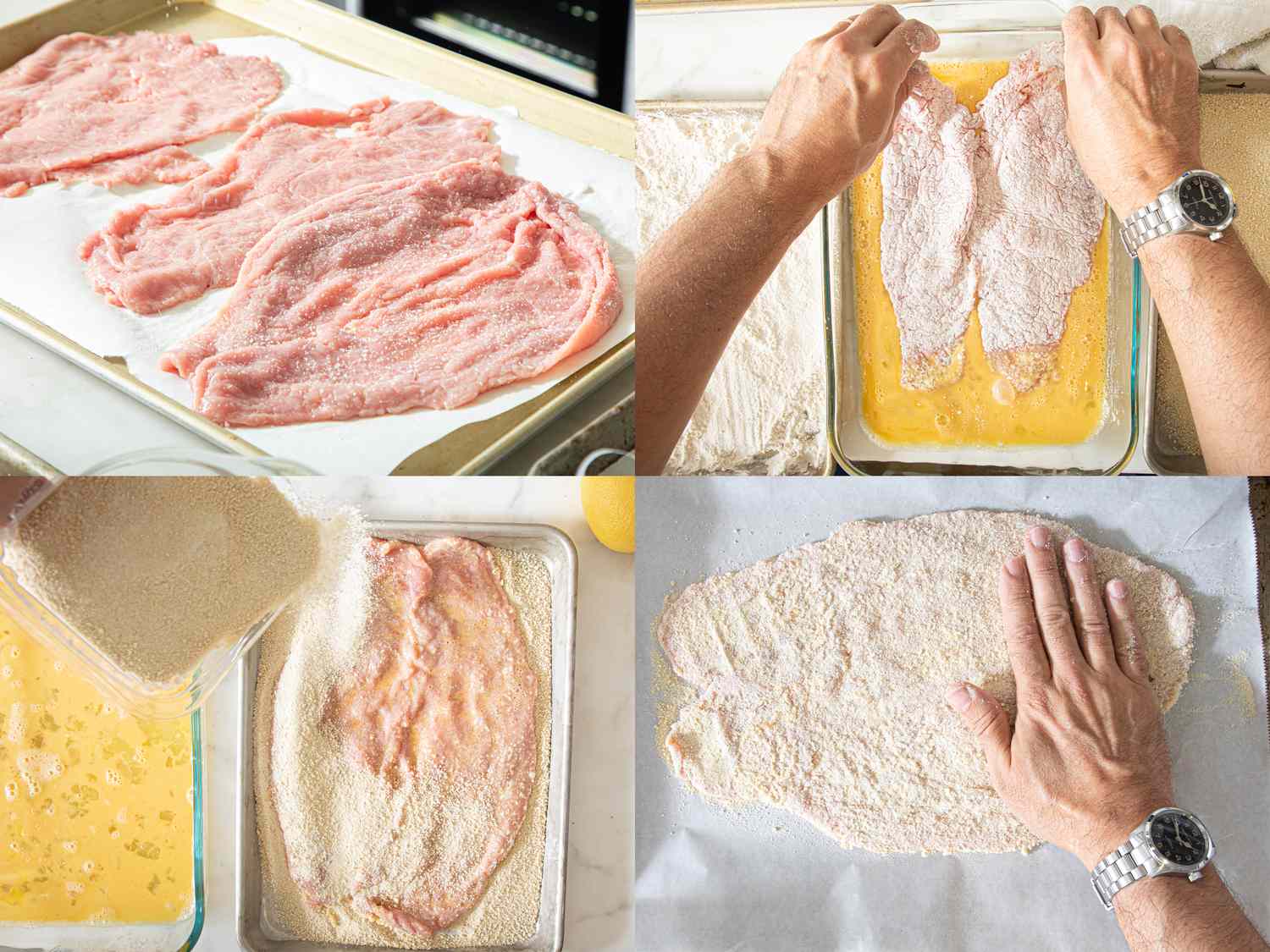Wiener Schnitzel
Thin veal, very fine crumbs, a quick salt, and a hot fry—here’s how to replicate Vienna’s puffed and golden veal cutlets at home in minutes.
- Salting the veal and letting it sit while preparing the breading and frying station causes moisture to bead on its surface, aiding the celebrated puffing of the crust when frying.
- A high frying temperature generates rapid steam pockets that inflate the breading while turning it perfectly golden.
- Pale, fine breadcrumbs are essential for a crust that puffs and turns to Wiener schnitzel’s signature golden color.
Breaded fried cutlets are some of the simplest dishes. They require few ingredients beyond the meat, breading components, and fat for frying, and cook very quickly thanks to their thinness. I'd almost go so far as to call them easy, except for the minor hassle of frying.
My own desire to fry up some cutlets was piqued on a recent press trip to Vienna, hosted by Vienna’s tourism board, where I had the chance to take a cooking lesson focused on the city’s legendary Wiener schnitzel at Meissl & Schadn, a restaurant that specializes in it. The funny thing about fried cutlets is that, as simple as they are, the tiniest variation in ingredient and method can have a profound impact on the results, and Wiener schnitzel is an excellent example of that. A good one, most will tell you, features a thin (often comically plate-sized), tender cutlet of veal encased in an airy and puffed jacket of fine, golden breading, its surface undulating with hills and dales created by the ballooning expansion of steam underneath. This is markedly different from the crispy wisps of tempura or the more adhesive coating of so many of the world’s other breaded and fried cutlets.
Achieving that result requires special attention to a few key points.
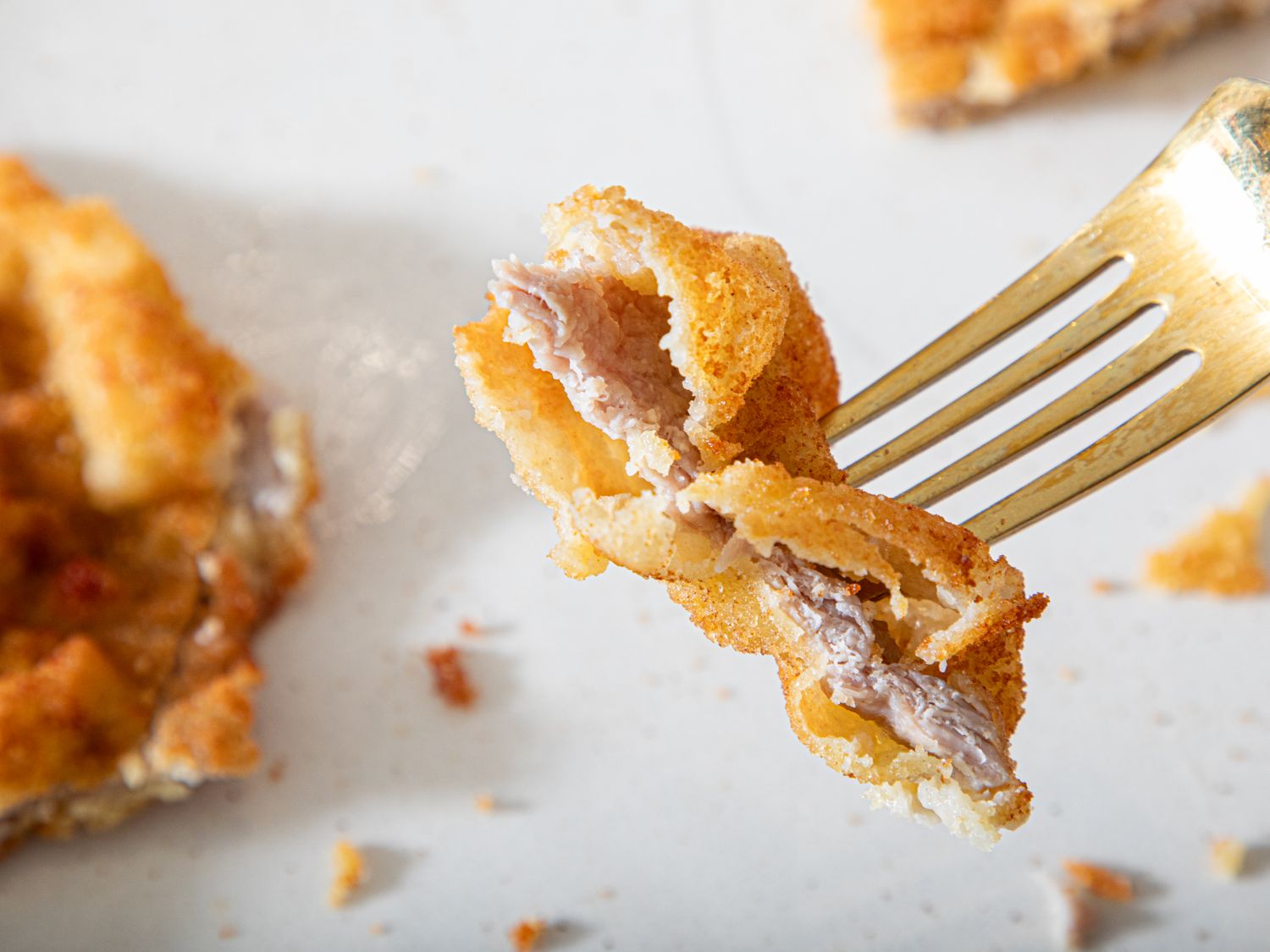
The Veal
Wiener schnitzel is traditionally made with veal, usually the lean top round cut; however, many recipes can be adapted to work with substitutions like pork or chicken. You can ask your butcher to cut and pound the cutlets for you, or buy a hunk of top round roast and do it yourself. If you do, first make sure you trim the roast of any silverskin, sections of fat, or sinew.
A one-pound top round roast makes enough schnitzel to feed two people very generously or four people more moderately. If you want to go the two-serving route and make those LP-size cutlets I mentioned above, you'll need to butterfly them by slicing across the grain to form a roughly 1/4-inch slab of meat, but being careful not to slice all the way through to disconnect it from the roast. A second parallel cut, also 1/4 inch thick, can then be made to form a larger, butterflied cutlet. Otherwise, slice the roast into 1/4-inch-thick slabs, which will yield four smaller cutlets.
It's easiest to pound the cutlets between sheets of plastic, using the flat side of a meat mallet. A zip-top bag cut open on two sides, leaving it attached along one side, works great. You want to pound the meat all over, starting in the center and working towards the edges, until it is about 1/8 inch (3 mm) thick all over. The meat contracts when it's fried, so pounding it so thin will result in a cooked cutlet that won't seem nearly as thin as it does when raw.
Such thin cutlets can be difficult to handle without tearing, especially if they're on the larger side, but fear not—it's easy to mend them during the breading process, which will hide any holes or imperfections.
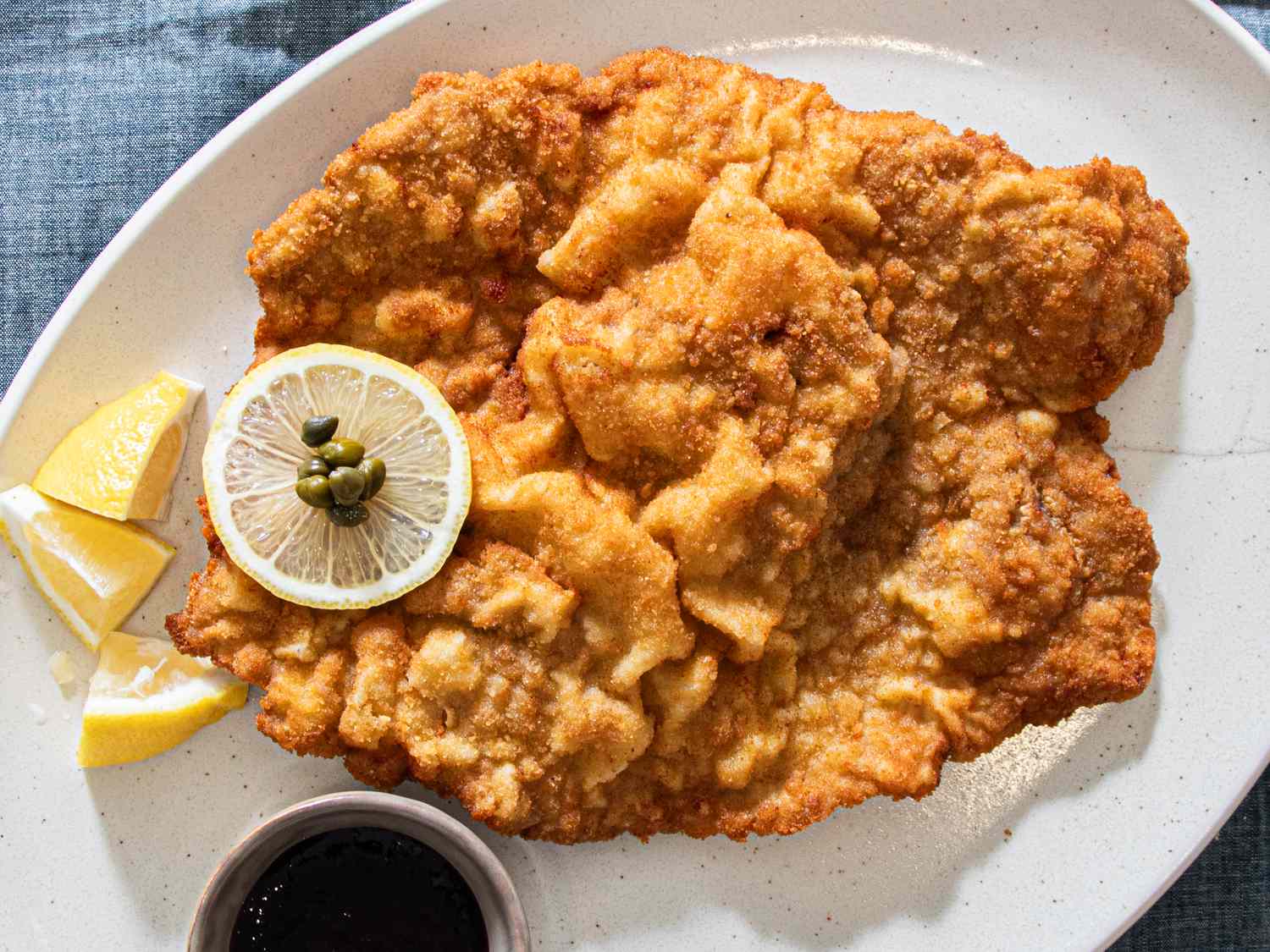
The Importance of Moisture for Puffing
The breading on Wiener schnitzel should puff and balloon as it fries. There are a few things that contribute to this. One is the breading ingredients themselves, which I’ll explain below. The other is moisture, which generates steam during frying, creating those inflated pockets. In Kenji’s schnitzel recipe for The New York Times, he suggests the clever trick of brushing the pounded cutlets with vodka before breading, which converts rapidly to vapor. It’s a cool technique, and one you should use if you have vodka on hand and don’t mind adding it to your food.
I've found that a well-timed seasoning of salt on the cutlets is also very effective. By pounding your cutlets and salting them right away, you'll have time to let them stand while you prepare everything else—set up a breading station, heat the oil, etc. While you're doing that, the salt will draw water out of the meat and dissolve into it, forming a brine on the surface. The cutlets shouldn't sit around long enough for that surface brine to dry, though, so when you start the dredging process, you'll have a good amount of wetness on the meat's surface, which will also steam and puff as you fry.
The Breading
For the breading to puff and expand around the cutlet, it needs to be applied evenly all over. The flour should lightly dust every part of the meat, the egg should thoroughly coat it with no dry spots, and the breadcrumbs should do the same. There's an art to applying the breadcrumbs, ensuring they fully cover the veal without being pressed into it, which can cause them to stick and not puff.
Just as important are the breadcrumbs themselves: They should be plain, pale, not toasted, and very fine. The paleness ensures the final cutlet is golden when fried, not deeply browned. If you start with toasted breadcrumbs, or ones with a more deeply browned crust ground into them, you risk a too-dark final Wiener schnitzel.
At the same time, if the breadcrumbs are too coarse, they will fail to form a barrier that seals around the cutlet well enough to expand and puff without allowing the steam to escape from too-large cracks and openings. That means panko is not a good choice here, unless you blitz it in a blender first until it's very fine (in which case, it's a great choice).
Don't wait long between breading and frying, since you need that surface moisture on the meat to remain under the breadcrumb layer and not soak into it; otherwise, you'll lose some of its steam-expanding potential. It's best to work one cutlet at a time, passing it through the breading station and frying it before starting on the next.
In most recipes that involve dredging, the best technique is to use the wet-hand/dry-hand method, in which you use one hand for the flour and breadcrumb applications and the other for the egg. This helps prevent your fingers from getting all gunked up with their own breading as you go from dry to wet to dry. With schnitzel, though, and especially those classically large pieces of Wiener schnitzel, you really can't successfully lift and transfer the thin sheets of meat without using both hands every step of the way. I know this because I made the mistake of trying to use one hand for each step while in Vienna, and almost had my schnitzel tear in half under its own weight. Just accept you'll have to quickly wash your hands after applying the breading each time.
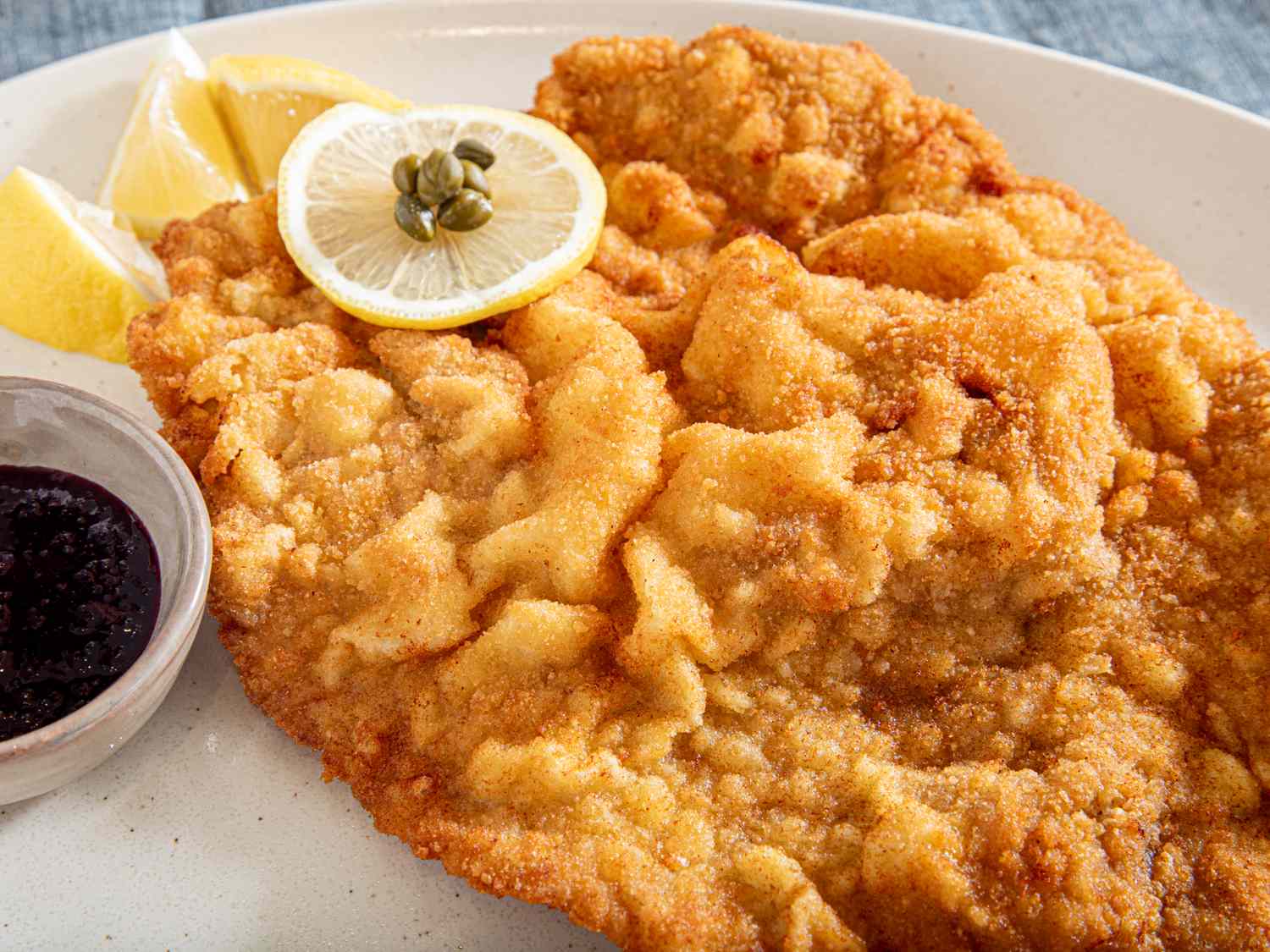
Fat and Frying
Lard is the most traditional fat for Wiener schnitzel, but clarified butter is another very common option. Neutral frying oil is fine too. If you want some flavor from lard or butter, you can use a mix of mostly neutral frying oil with some clarified butter or lard melted in, which keeps the cost down and saves you from having to buy large amounts of lard or butter just for frying, while still getting some of their flavor in there.
You need a generous amount of fat in the pan so the schnitzel floats without touching the bottom. You also need the fat nice and hot, around 400°F (205°C). That's high for frying, but it helps to rapidly generate the steam we're trying to create while the breading still has some elasticity. At the same time, since the cutlets are so thin, a higher heat helps ensure a perfectly golden crust in the rapid time it takes for the meat to cook through.
When you fry, try to gently swirl the pan to minimize the formation of hot and cold spots in the oil. However, please be careful—you don't want to slosh it out onto your stovetop or yourself. You can also gently baste the top of the frying schnitzel with fat, which will help it cook quickly and develop that puffed effect.
Serving
Wiener schnitzel doesn’t require much. Some lemon wedges, for sure—the acidity is key to balance all that richness—and if you want some capers, maybe an anchovy fillet, on the plate. On the side, the traditional choice is erdäpfelsalat, the creamy and similarly golden Austrian potato salad.
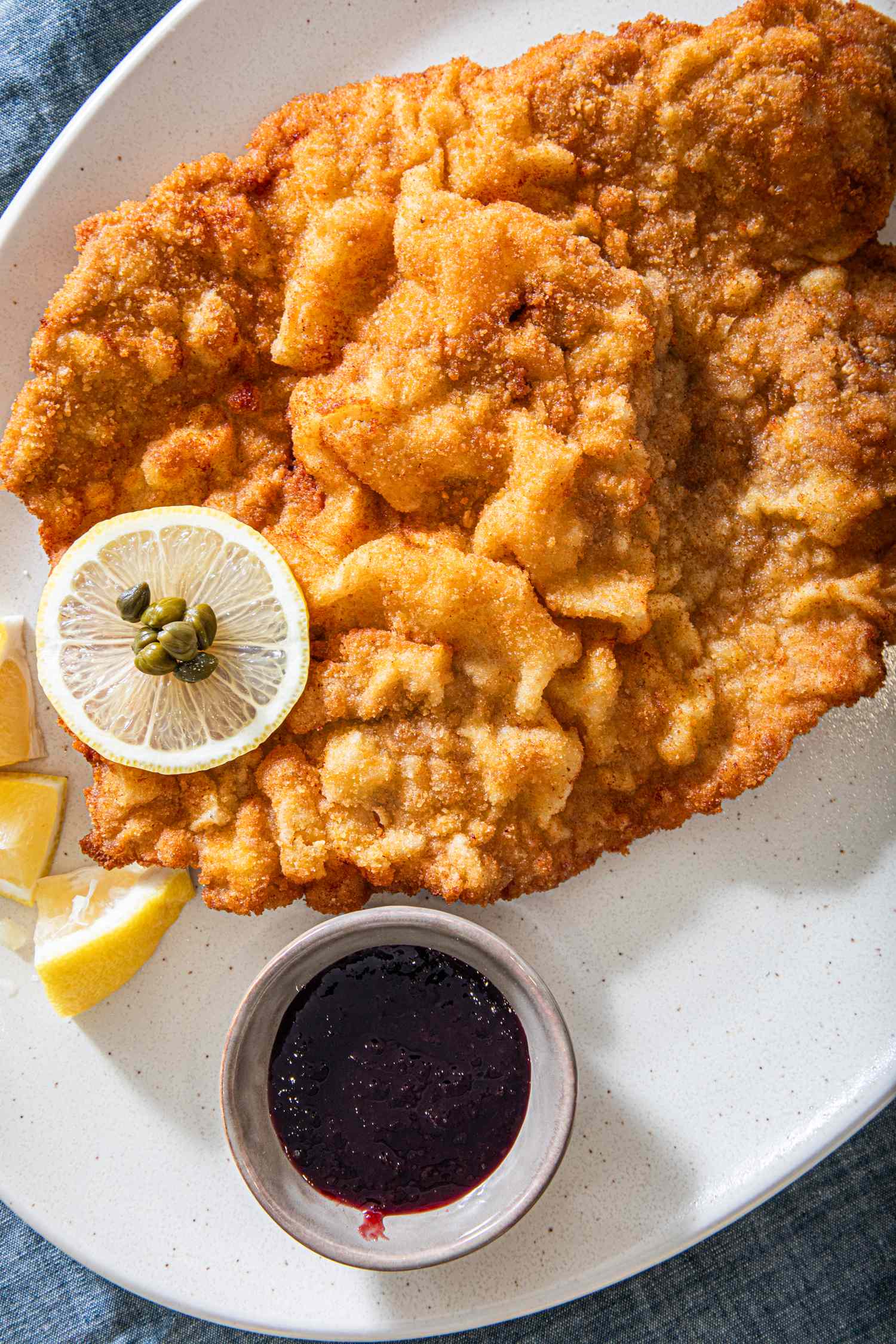
Recipe Details
Wiener Schnitzel
Save Print Keep Screen Awake
Ingredients
-
1 pound (454 g) veal top round, prepared into 2–4 cutlets (see Step 1 below), or 2–4 thinly pounded, prepared veal cutlets (about 1 pound)
-
Kosher salt
-
Neutral oil, clarified butter, lard, or some combination, for frying
-
1 cup all-purpose flour (4 1/2 ounces; 128 g)
-
5 large eggs, beaten
-
1 cup light, very fine breadcrumbs (4 ounces; 113 g), see notes
-
Lemon wedges, for serving
-
Erdäpfelsalat (Austrian-style potato salad), for serving (optional)
-
Cranberry sauce, for serving (optional)
Directions
-
If preparing the cutlets yourself: Using a long, sharp knife, and slicing across the grain, cut veal into a 1/4-inch slab, slicing all the way through if making 4 smaller cutlets or leaving it attached at the base if cutting 2 larger ones; if cutting larger ones, then slice a second 1/4-inch-thick slab to form a butterflied cutlet. Repeat to form remaining cutlets.
![Series of images showing steps of slicing a piece of meat on a cutting board with a knife]()
-
Cut open 2 sides of a 1-gallon zipper-lock bag. Working 1 cutlet at a time, sandwich between the zipper-lock bag flaps and, using the flat side of a meat pounder, pound all over, working from the center towards the edges, until cutlet is about 1/8 inch (2–3 mm) thick. Season pounded cutlet all over top side with salt, then transfer to a platter or rimmed baking sheet and salt other side. Repeat with remaining cutlet(s).
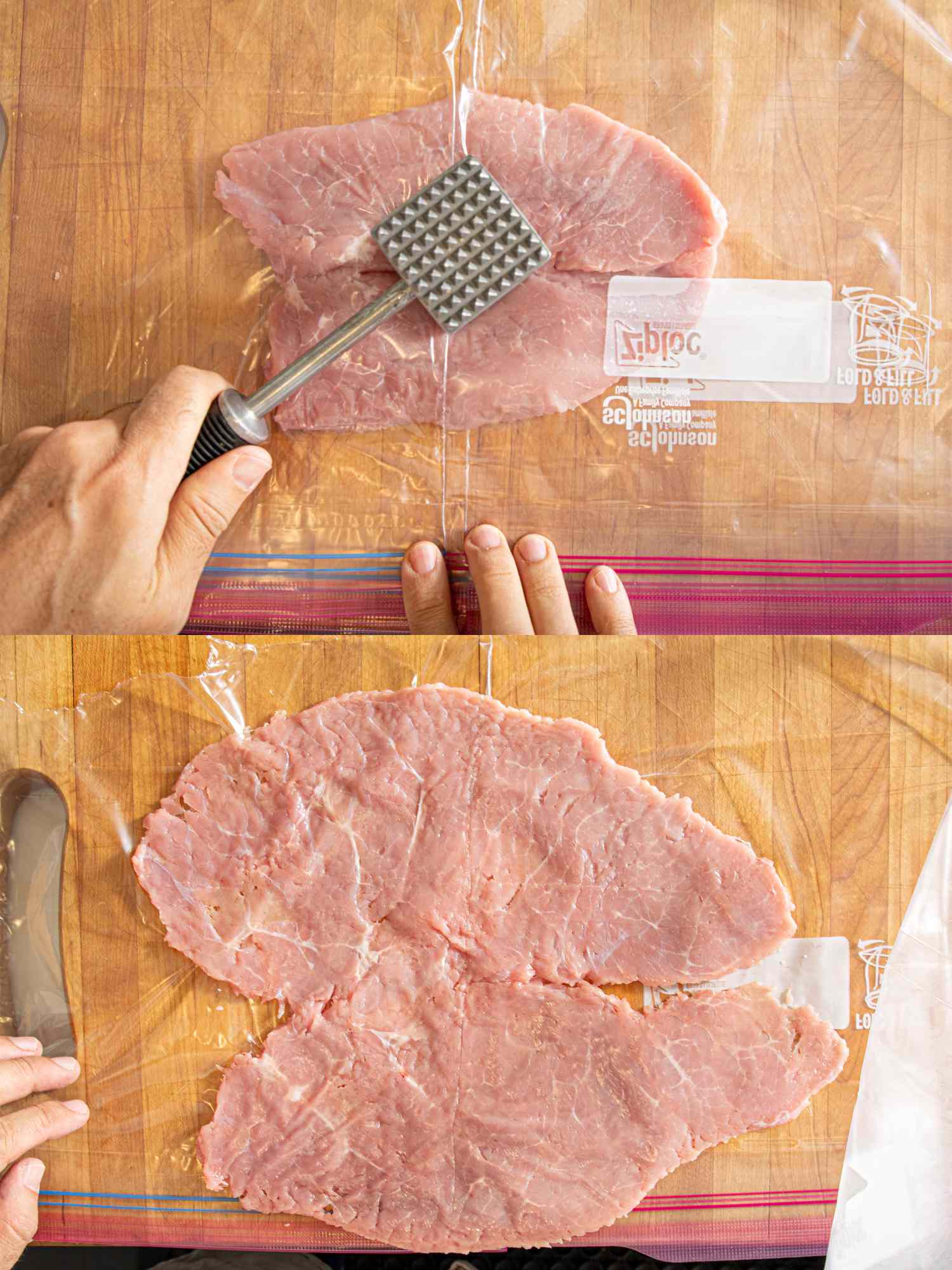
-
Set a wire rack in a rimmed baking sheet and line with paper towels. Fill a vessel that's wide and deep enough to fit 1 pounded cutlet at a time, such as a wok, cast-iron skillet, or sauté pan, with at least 3/4 inch of oil, clarified butter, and/or lard and heat to 400°F (200°C). While the fat heats, fill 3 wide platters, baking dishes, or rimmed baking sheets with the flour, beaten eggs, and breadcrumbs, respectively. Working with 1 cutlet at a time and using 2 hands to prevent it from ripping while handling, dredge cutlet all over in an even layer of flour, gently shaking off excess. Then dredge in the egg, ensuring a thorough and even coating. Finally, lift the cutlet and let the excess egg drip off, then dredge in the breadcrumbs, ensuring an even coating but avoiding pressing the breadcrumbs firmly into the meat (this can make them stick to it and reduce the desired puffing).
![Steps in preparing breaded schnitzel including flattening meat coating with egg and breadcrumbs and pressing the coating]()
-
Immediately and carefully lower cutlet into hot oil and fry, gently swirling the pan (be very careful not to slosh hot fat out) and spooning hot oil all over the top side of the cutlet, until golden brown on the bottom, 1 to 2 minutes. Using tongs and a slotted metal spatula, carefully flip the cutlet and fry until golden brown on second side, 1 to 2 minutes longer. Carefully lift schnitzel from oil, allowing excess oil to drain, and transfer to prepared paper towels to drain.

-
Repeat dredging and frying with remaining cutlets, being careful to maintain the oil's temperature as you work.
![A breaded schnitzel being removed from a frying pan with tongs and a spatula]()
-
Transfer the schnitzel to plates and serve with lemon wedges, with Austrian potato salad alongside, if desired.

Notes
It's very important to use very fine, unseasoned breadcrumbs that are light (not toasted) in color. Toasted breadcrumbs will darken too much in the oil, while coarse breadcrumbs will not form the proper type of puffable crust. If desired, you can process panko breadcrumbs in a food processor until very fine.
Special Equipment
Large cooking vessel (wide enough to fit the pounded cutlet and deep enough to contain the cutlet and oil during frying), such as a wok, wide sauté pan, or Dutch oven; instant-read thermometer; meat pounder; one 1-gallon zipper-lock bag
- The Latest
- Recipes
- Frying
- Western European
- Europe



